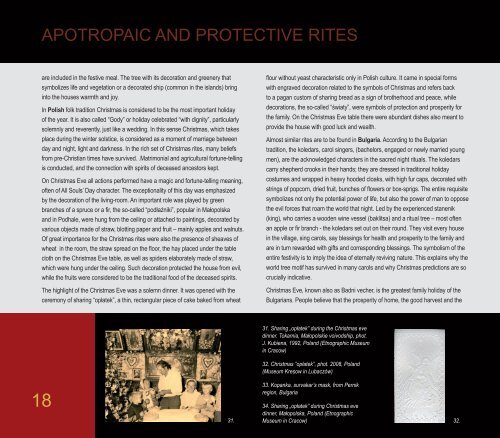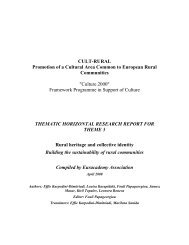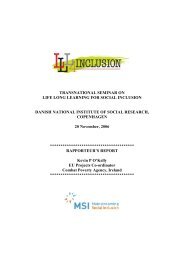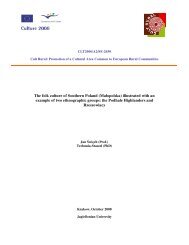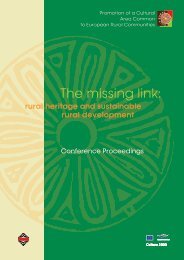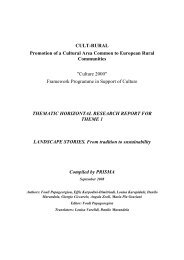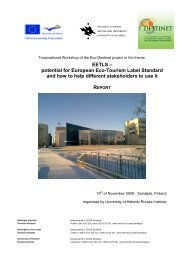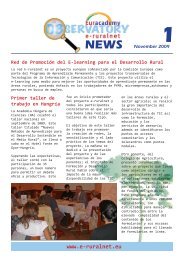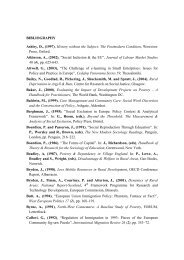ÐÐ¾Ð´Ð°Ñ Ð¿Ð¾ изложбаÑа - cult rural - Prisma
ÐÐ¾Ð´Ð°Ñ Ð¿Ð¾ изложбаÑа - cult rural - Prisma
ÐÐ¾Ð´Ð°Ñ Ð¿Ð¾ изложбаÑа - cult rural - Prisma
You also want an ePaper? Increase the reach of your titles
YUMPU automatically turns print PDFs into web optimized ePapers that Google loves.
APOTROPAIC AND PROTECTIVE RITES<br />
are included in the festive meal. The tree with its decoration and greenery that<br />
symbolizes life and vegetation or a decorated ship (common in the islands) bring<br />
into the houses warmth and joy.<br />
In Polish folk tradition Christmas is considered to be the most important holiday<br />
of the year. It is also called “Gody” or holiday celebrated “with dignity”, particularly<br />
solemnly and reverently, just like a wedding. In this sense Christmas, which takes<br />
place during the winter solstice, is considered as a moment of marriage between<br />
day and night, light and darkness. In the rich set of Christmas rites, many beliefs<br />
from pre-Christian times have survived. .Matrimonial and agri<strong>cult</strong>ural fortune-telling<br />
is conducted, and the connection with spirits of deceased ancestors kept.<br />
On Christmas Eve all actions performed have a magic and fortune-telling meaning,<br />
often of All Souls’ Day character. The exceptionality of this day was emphasized<br />
by the decoration of the living-room. An important role was played by green<br />
branches of a spruce or a fir, the so-called “podłaźniki”, popular in Małopolska<br />
and in Podhale, were hung from the ceiling or attached to paintings, decorated by<br />
various objects made of straw, blotting paper and fruit – mainly apples and walnuts.<br />
Of great importance for the Christmas rites were also the presence of sheaves of<br />
wheat in the room, the straw spread on the floor, the hay placed under the table<br />
cloth on the Christmas Eve table, as well as spiders elaborately made of straw,<br />
which were hung under the ceiling. Such decoration protected the house from evil,<br />
while the fruits were considered to be the traditional food of the deceased spirits.<br />
The highlight of the Christmas Eve was a solemn dinner. It was opened with the<br />
ceremony of sharing “opłatek”, a thin, rectangular piece of cake baked from wheat<br />
flour without yeast characteristic only in Polish <strong>cult</strong>ure. It came in special forms<br />
with engraved decoration related to the symbols of Christmas and refers back<br />
to a pagan custom of sharing bread as a sign of brotherhood and peace, while<br />
decorations, the so-called “światy”, were symbols of protection and prosperity for<br />
the family. On the Christmas Eve table there were abundant dishes also meant to<br />
provide the house with good luck and wealth.<br />
Almost similar rites are to be found in Bulgaria. According to the Bulgarian<br />
tradition, the koledars, carol singers, (bachelors, engaged or newly married young<br />
men), are the acknowledged characters in the sacred night rituals. The koledars<br />
carry shepherd crooks in their hands; they are dressed in traditional holiday<br />
costumes and wrapped in heavy hooded cloaks, with high fur caps, decorated with<br />
strings of popcorn, dried fruit, bunches of flowers or box-sprigs. The entire requisite<br />
symbolizes not only the potential power of life, but also the power of man to oppose<br />
the evil forces that roam the world that night. Led by the experienced stanenik<br />
(king), who carries a wooden wine vessel (baklitsa) and a ritual tree – most often<br />
an apple or fir branch - the koledars set out on their round. They visit every house<br />
in the village, sing carols, say blessings for health and prosperity to the family and<br />
are in turn rewarded with gifts and corresponding blessings. The symbolism of the<br />
entire festivity is to imply the idea of eternally reviving nature. This explains why the<br />
world tree motif has survived in many carols and why Christmas predictions are so<br />
crucially indicative.<br />
Christmas Eve, known also as Badni vecher, is the greatest family holiday of the<br />
Bulgarians. People believe that the prosperity of home, the good harvest and the<br />
31. Sharing „opłatek” during the Christmas eve<br />
dinner. Tokarnia, Małopolskie voivodship, phot.<br />
J. Kubiena, 1992, Poland (Etnographic Museum<br />
in Cracow)<br />
32. Christmas ”opłatek”, phot. 2008, Poland<br />
(Museum Kresow in Lubaczów)<br />
18<br />
33. Kopanka, survakar’s mask, from Pernik<br />
region, Bulgaria<br />
34. Sharing „opłatek” during Christmas eve<br />
dinner, Małopolska, Poland (Etnographic<br />
31. Museum in Cracow)<br />
32.


